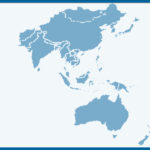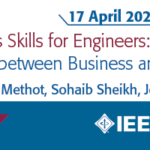Prepared by: Satyanarayana Bheesette, Chair for IEEE Bombay Section

IEEE Bombay Section was formed on 13th July 1976 from the erstwhile India Section, with Mr. T.V. Balan as its first Chairperson. The initial territory of the Section included the states of Maharashtra, Goa and Gujarat. While Gujarat and Pune city (in Maharashtra) became separate Sections in 1990 and 2010 respectively, the states of Madhya Pradesh (MP) and Chhattisgarh as well as the union territory of Diu and Daman were subsequently added to the Bombay Section’s footprint. Nagpur in Maharashtra and MP are the two subsections under Bombay Section.
IEEE Bombay Section conducted the first ever workshop on Microprocessor and its applications way back in 1977 at a time when hardly anyone in India had heard of the word Microprocessor. The International Conference on Systems, Man and Cybernetics of the SMC Society was held in Bombay in 1984. This was the first IEEE Conference held in India. Bombay Section hosted TENCON, the premier annual international technical conference of Region 10 in 1989. India Council’s INDICON in 2013 and MTTS’s IMaRC in 2019 are the other notable major conferences it has hosted. Bombay Section’s Signature Symposia/Conference (IBSS/IBSSC) has been regularly held since 2015.
India Council and Nagpur Subsection’s joint event INDISCON and IBSSC-2021 is planned to be held in 2021. Bombay Section will be the host for R10’s flagship Symposium TENSYMP in 2022. The technical and professional activity calendar of the Section is rich with student, WIE, YP, SIGHT and LMAG congresses and events throughout the year. Its technical and academic training programmes and workshops, such as Skill and Knowledge Enhancement Programme (SKEP) received MGA’s recognition. Besides, dozens of technical conferences are organized throughout the year by the academic institutes with IEEE SBs and the Section’s technical sponsorship.
The Bombay Section over the past 45 years has set an excellent example for ethical practices and an equal opportunity unit. It laid special emphasis on student member benefits and mentoring of young professional leaders for future. The Section’s major activities are led by its standing committees and affinity groups, while the technical events are actively taken care of by its 14 chapters and societies. WIE and SIGHT groups of the Section work tirelessly in pushing their high impact activities The Section enjoys a strong and agile network of Student Branches, many of which formed their student technical chapters. Various teams of the Section compete strongly with other Sections and regularly win prestigious awards for their best volunteering services as well as attractive grants from R10 for their innovative proposals. One of the major thrust areas of the Section in the immediate future is membership development, which was hit due the ongoing pandemic.


